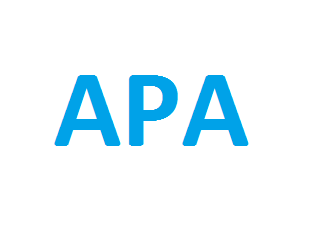
The Academic Perspective Procedia publishes Academic Platform symposiums papers as three volumes in a year. DOI number is given to all of our papers.
Publisher : Academic Perspective
Journal DOI : 10.33793/acperpro
Journal eISSN : 2667-5862
E-Sağlık ve Güvenlik: Riskler, Fırsatlar ve Çözüm Önerileri
Çiğdem Çoban;Mehmet Fatih Tüysüz
1753
921
Abstract
E-Sağlık; bilgi ve iletişim teknolojilerinin (BİT) sağladığı olanakların, hastalıkların teşhis ve tedavi edilmesi, sağlık hizmetlerine erişilebilirliğin arttırılması, sağlık sektöründe yer alan tüm paydaşlara kaliteli, verimli ve etkili sağlık hizmetlerin sunulması için kullanılmasıdır. E-Sağlık, sağlık hizmetlerini geliştiren ve kolaylaştıran avantajlara sahip olmasına rağmen, Elektronik Hasta Kayıtlarına (EHR) yetkisiz erişim, tıbbi verilerin gizliliği ve bütünlüğüne saldırı, sistem ve internet güvenliği sorunları gibi birçok güvenlik ve gizlilik sorunuyla karşı karşıyadır. Bu sorunlar, e-Sağlık sistemlerinin düzgün çalışmasını engelleyebilir ve sistem kullanıcılarına (hasta, doktor vs.) hatalı, eksik ve yanlış bilgiler verilmesine sebep olabilir. Bu durum tıbbi veri güvenliği için tehlike oluşturmaktadır. Bu nedenle e-Sağlık sistemlerinde güvenlik konusunun değerlendirilmesi büyük bir önem taşımaktadır. Bu çalışma kapsamında, e-Sağlıkta güvenlik konusu bilgi ve iletişim teknolojileri çerçevesinde ele alınmış, olası riskler ve fırsatlar göz önüne alınarak literatürde yapılan çalışmalar irdelenmiş ve gelecekte yapılması gereken öneriler okuyucuya sunulmuştur.
Keywords:
E-Sağlık, Güvenlik, Bilgi ve İletişim Teknolojileri
References
[1] WHO. Constitution Of The World Health Organization.
[Online]. Available:https://www.who.int/governance/eb/who_constitution_en.pdf (Erişim Tarihi:05.10.2019)
[2] Azeez, N.A. and Vyver CV. Security and privacy issues in e-health cloud based system: A comprehensivecontent analysis. Egyptian Informatics Journal, 2019; 20(2): 97-108.
[3] Eysenbach G. What is e-health?. J Med Internet Res. 2001;3(2). doi: 10.2196/jmir.3.2.e20
[4] WHO. Global diffusion of eHealth: Making universal health coverage achievable. December 2016.
[Online]. Available: https://www.who.int/goe/publications/global_diffusion/en/ (Erişim Tarihi: 05.10.2019)
[5] Erişim Tarihi: 5 Ekim 2019. https://innovatemedtec.com/digital-health/ehealth
[6] Aceto G., Persico V., Pescapéa A. The role of Information and Communication Technologies in healthcare:taxonomies, perspectives, and challenges. Journal of Network and Computer Applications. 2018; 107:125-154.
[7] He D., Kumar N.,Chen J., Lee C., Chilamkurti N. Robust anonymous authentication protocol for health-careapplications using wireless medical sensor networks. Multimedia Systems. 2015; 21(1): 49-60.
[8] He D., Zeadally S., Kumar N., Lee J.H. Anonymous Authentication for Wireless Body Area Networks WithProvable Security.IEEE SYSTEMS JOURNAL. 2017;11(4): 2590-2601.
[9] Zhang K., Liang X., Yang K. , Su Z., Shen X.S., Luo H. H. Security and privacy for mobile healthcarenetworks: From a quality of protection perspective. IEEE Wireless Communications. 2015; 22(4):104-112.
[10] Tan Z. A User Anonymity Preserving Three-Factor Authentication Scheme for Telecare MedicineInformation Systems. Journal of Medical Systems.2014; 38(16).
[11] Erişim tarihi: 5 Ekim 2019, https://dijitalhastane.saglik.gov.tr/TR,4874/ehr-electronic-health-record---eskelektronik-saglik-kaydi.html
[12] Mell P., Grance T. The NIST Definition of Cloud Computing.2011.
[Online]. Available:https://nvlpubs.nist.gov/nistpubs/Legacy/SP/nistspecialpublication800-145.pdf
[13] Gope P., Hwang T. BSN-Care: A Secure IoT-Based Modern Healthcare System Using Body SensorNetwork. IEEE Sensors Journal. March 2016; 16(5):1368-1376.
[14] ENISA. Security and Resilience in eHealth. December 2015.
[Online]. Available:https://www.enisa.europa.eu/publications/security-and-resilience-in-ehealth-infrastructures-andservices.(Erişim Tarihi: 05.10.2019).
[15] Kişisel Verilerin Korunması Kanunu No 6698. 2016. Türkiye.http://www.mevzuat.gov.tr/MevzuatMetin/1.5.6698.pdf. (Erişim Tarihi: 05.10.2019).
[16] Kişisel Sağlik Verileri Hakkinda Yönetmelik. 2019. Türkiye.http://www.resmigazete.gov.tr/eskiler/2019/06/20190621-3.htm. (Erişim Tarihi 05.10.2019).
[17] Sawand A., Djahel S., Zhang Z., Naït-Abdesselam F. Toward Energy-Efficient and Trustworthy eHealthMonitoring System. China Commun. 2015; 2 (1):46-65.
[18] Zhang M., Raghunathan A., Jha N.K. Trustworthiness of Medical Devices and Body Area Networks.Proceedings of the IEEE. August 2014; 102(8): 1142-1188.
[19] Fabian B., Ermakova T., Junghanns P. Collaborative and secure sharing of healthcare data in multiclouds.Information Systems. March 2015;48:132-150.
[20] Sahi A., Lai D. Li Y. Security and privacy preserving approaches in the eHealth clouds with disasterrecovery plan. Computers in Biology and Medicine.2016; 78: 1-8.
[21] Zhou J., Lin X., Dong X., Cao Z. PSMPA: Patient Self-Controllable and Multi-Level Privacy-PreservingCooperative Authentication in Distributed m-Healthcare Cloud Computing System. IEEE Transactıons OnParallel And Dıstrıbuted Systems. JUNE 2015; 26(6).
[22] Wang X.A., Ma J., Xhafa F., Zhang M., Luo X. Cost-effective secure E-health cloud system using identitybased cryptographic techniques. Future Gener Comput Syst. 2017;67:242-254.
[23] Kahani N., Elgazzar K., Cordy K. Authentication and Access Control in e-Health Systems in the Cloud.In:IEEE International Conference on High Performance and Smart Computing (HPSC), Big Data Security onCloud (BigDataSecurity), New York, USA, 2016, pp.13-23.
[24] Thilakanathan D., Chen S., Nepal S., Calvo, R.A., Alem L.A platform for secure monitoring and sharing ofgeneric health data in the Cloud. Future Generation Computer Systems.2014; 35:102–113.Doi:10.1016/j.future.2013.09.011.
[25] Qi J., Ma J., Chao Y., Ma X., Shin J., Chaudhry S.A. Efficient end-to-end authentication protocol forwearable health monitoring systems. Computers & Electrical Engineering. October. 2017; 63: 182-195.
[26] Liu W., Liu X., Liu J., Wu Q., Zhang J., Li Y. Auditing and Revocation Enabled Role-Based AccessControl over Outsourced Private EHRs. In: 2015 IEEE 17th International Conference on High PerformanceComputing and Communications (HPCC), New York, NY, USA, 2015, pp. 336–341.
[27] Abdmeziem M.R., Tandjaoui, D. An end-to-end secure key management protocol for e-health applications.Computers & Electrical Engineering. April 2015; 44. Doi:10.1016/j.compeleceng.2015.03.030.
[28] Silva B.M., Rodrigues J., Canelo F., Lopes I.M.C., Lloret J. Towards a cooperative security system formobile-health applications. Electron Commer Res.2019;19:629-654.
Cite
-
 %0 Academic Perspective Procedia (ACPERPRO) E-Sağlık ve Güvenlik: Riskler, Fırsatlar ve Çözüm Önerileri% A Çiğdem Çoban , Mehmet Fatih Tüysüz% T E-Sağlık ve Güvenlik: Riskler, Fırsatlar ve Çözüm Önerileri% D 11/22/2019% J Academic Perspective Procedia (ACPERPRO)% P 925-934% V 2% N 3% R doi: 10.33793/acperpro.02.03.104% U 10.33793/acperpro.02.03.104
%0 Academic Perspective Procedia (ACPERPRO) E-Sağlık ve Güvenlik: Riskler, Fırsatlar ve Çözüm Önerileri% A Çiğdem Çoban , Mehmet Fatih Tüysüz% T E-Sağlık ve Güvenlik: Riskler, Fırsatlar ve Çözüm Önerileri% D 11/22/2019% J Academic Perspective Procedia (ACPERPRO)% P 925-934% V 2% N 3% R doi: 10.33793/acperpro.02.03.104% U 10.33793/acperpro.02.03.104
© Academic Perspective 2018. All rights reserved.




